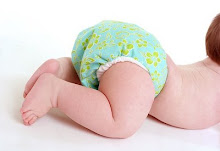 Photo Source
Photo SourceI grew up in a dance studio.
Literally.
My mother ran the studio and taught classes while I toddled my way around the rooms. Every day was Mommy take daughter to work day. I can't help but believe this early exposure to movement deeply influenced the way I process information and create dance.
In college my focus was ballet based modern choreography. It has all the benefits of ballet technique, but is easier on the joints. Plus, lets be honest. I love to roll around on the floor like a 4 year old and modern dance justifies that. It feels good to move.
Now that Morris is old enough, I'm looking at a few classes here in town. I adore watching him explore the elements of movement: space, time and energy. Kids love to discover all the options that are available to them to find they have choices in how they move.

I got back last week from the camp. I fell in love all over again with teaching the fundamentals of movement. I love a lack of inhibition. There are so many life lessons to be had from simply watching such free and open bodies doing anything that comes to mind without care or thought to what it looks like and who is watching. However, over the years of teaching, I am seeing this lack of inhibition and creativity far less frequently.
Children are generally taught in a very linear system. They sit in desks arranged in grids. They walk in a row to the playground. They go through the lunch room in a straight line. These activities train the brain in very specific ways. While it is good to have structure, and it is good for a 2nd grade teacher to have order in the classroom, the brain needs to develop in circular patterns as well. This can mean several different things.
First, dance/movement provides what is called a rich sensory environment which means giving the experience that can forge more pathways between cells in the brain. The more types of movement and movement patterns a child is exposed to, the more synapses are created. On the other side of it, if children are not given the opportunity to move in certain ways (circular patterns included) the brain will not develop in those areas. This can mean that child's brain will always look to solve problems using what I'll call the straight line synapses. The options become limited.
"Clear evidence has emerged that suggests that activity, experience, attachment, and stimulation determine the structure of the brain.
Early experiences directly affect how the brain is "wired."
At birth, baby's brain is remarkably unfinished. Most of its 100 billion neurons are not yet connected in networks. Some neurons are programmed for specific functions-breathing and heartbeat, but most are not yet designated for tasks and are waiting for the experiences in the environment to determine their function. Connections are created by the sensory experiences that stimulate the growth of neural connections. Forming and reinforcing these connections are the key tasks of early brain development.
A child's brain forms twice as many synapses (connections) as the child will eventually use. If these synapses are used repeatedly in a child's day-to-day life, they are reinforced. If they are not used repeatedly, they are eliminated. In this way, experience places a crucial role in the "wiring" of a child's brain. Activity levels drop naturally during adolescence when the brain "prunes" unused connections." resource
Early experiences directly affect how the brain is "wired."
At birth, baby's brain is remarkably unfinished. Most of its 100 billion neurons are not yet connected in networks. Some neurons are programmed for specific functions-breathing and heartbeat, but most are not yet designated for tasks and are waiting for the experiences in the environment to determine their function. Connections are created by the sensory experiences that stimulate the growth of neural connections. Forming and reinforcing these connections are the key tasks of early brain development.
A child's brain forms twice as many synapses (connections) as the child will eventually use. If these synapses are used repeatedly in a child's day-to-day life, they are reinforced. If they are not used repeatedly, they are eliminated. In this way, experience places a crucial role in the "wiring" of a child's brain. Activity levels drop naturally during adolescence when the brain "prunes" unused connections." resource
I am a huge advocate of creative movement classes for all children--The body is our instrument. Let's Play!



























No comments:
Post a Comment